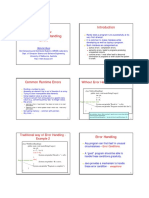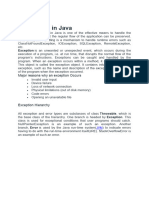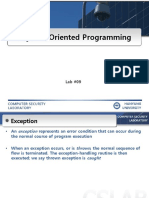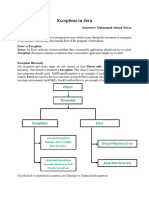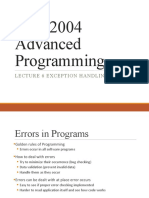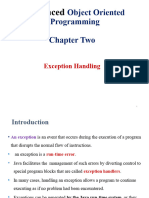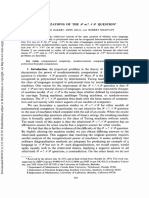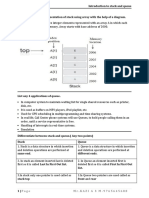0% found this document useful (0 votes)
130 views17 pagesUser Defined Exception: Compiled By: Aneeta Siddiqui
The document discusses user defined exceptions in Java. It provides examples of how to define a custom exception by extending the Exception class and overriding its methods. It also demonstrates how to throw and catch custom exceptions within code. Specifically, it shows an example of creating an InvalidRadiusException for a Circle class to check for a valid radius. It includes the code to define the exception class, throw it if the radius is invalid, and catch and handle the exception.
Uploaded by
Angel AngelCopyright
© © All Rights Reserved
We take content rights seriously. If you suspect this is your content, claim it here.
Available Formats
Download as PDF, TXT or read online on Scribd
0% found this document useful (0 votes)
130 views17 pagesUser Defined Exception: Compiled By: Aneeta Siddiqui
The document discusses user defined exceptions in Java. It provides examples of how to define a custom exception by extending the Exception class and overriding its methods. It also demonstrates how to throw and catch custom exceptions within code. Specifically, it shows an example of creating an InvalidRadiusException for a Circle class to check for a valid radius. It includes the code to define the exception class, throw it if the radius is invalid, and catch and handle the exception.
Uploaded by
Angel AngelCopyright
© © All Rights Reserved
We take content rights seriously. If you suspect this is your content, claim it here.
Available Formats
Download as PDF, TXT or read online on Scribd
/ 17






